Year 1, Lesson 1.4: Ethical Paradigms
Unit Learning Goal
Students will understand “good work” through excellence, ethics, and engagement.
Lesson Goal
Students will be able to define ethics and determine how different ethical paradigms influence choices.
Assessment
Monitor class discussion to determine whether students are able to apply the ethical paradigms to their own lives.
Analyze Exit Tickets, which ask students to record one way that Ethics is defined and to explain one of the ethical paradigms that resonates with them.
CASEL Alignment
Responsible Decision-Making
Portfolio Documentation
Resources
Prerequisites
Lesson 1.3 - The 3Es: Excellence, Ethics and Engagement
Total Time
45 minutes
-
Remind students about the 3 Es of good work: Excellence, Engagement, and Ethics. You may wish to display the triple-helix image of the three intertwined elements as a quick review, write the three elements on the board, show a video, or some other method of prompting students to recall.
Focus in your review on the Ethics component, which will be explored more in today’s session.
Instructions
1. Opener Review the 3 Es framework. [5 minutes]
Share that Ethics can be a difficult concept to understand and that it is going to take some practice to understand what Ethics means and how it plays into our everyday decision-making.
Ask for several volunteers to share what comes to mind when they hear the word “Ethics.” Depending on students’ responses, you may wish to correct any misconceptions or guide students in particular directions. Depending on what is going on in your community, country, or cultural context, you may wish to raise specific Ethical issues that are being debated (e.g., a cheating policy at your school; a political debate playing out in your community or nation; etc.).
Synthesize students’ responses. Conclude with a few of the ways that Ethics can be defined at its most basic:
Ethics is about concepts of what is “right” vs. “wrong.”
Ethics is often synonymous with “morals.”
Our Ethical principles influence our behaviors and decisions.
Our ideas of what is Ethical might come from our experiences, communities, and personal values.
Ethics often concerns how we interact with and affect the world around us, including other people.
2. Present students with the “Trolley Problem.” [5 minutes]
Explain that one classic example of an Ethical conundrum or problem is the Trolley Problem. Explain the classic Trolley Problem:
A runaway trolley is speeding on a track.
Ahead of the trolley are five people who are going to be run over by the trolley.
On an alternative track, there is a single person.
From your vantage point, you could choose to divert the trolley by pulling a lever. If you do so, you will send the trolley to run over the single person and spare the five people.
Should you pull the lever?
Elicit some responses to the problem. How would students respond? Try to highlight any differences or disagreements in students’ responses.
Explain that differences in responses to the Trolley Problem illustrate different approaches to Ethics.
3. Allow students to explore additional trolley problem scenarios. [10 minutes]
Let students use the “Absurd Trolley Problems” simulator (e.g., on their phones, on their other devices, in small groups if you so choose) to answer their own versions of the trolley problem. Depending on your class structure and time, you may wish to have students do this exercise individually, in pairs, in small groups, or all together as a whole class.
Once students have had time to explore, bring them back. Ask them what they noticed about their reasoning during their answers. Again, try to highlight areas of commonality and difference.
4. Present three different Ethical paradigms that are common in Ethical reasoning. Ask students to answer the classic trolley problem based on each paradigm. [7 minutes]
Utilitarianism: Doing the greatest good for the greatest number of people. How can the most people be helped?
Trolley Problem Possible Answer: Pull the lever, because you will save 5 people and sacrifice 1. Your action has a net benefit of 4 people.
Deontology: Follow rules that are justified by moral principles and the idea of how everyone should act.
Trolley Problem Possible Answer: Do not pull the lever. It is simply wrong to take an action that harms someone. If you actively pull the lever, you have a role in harming the single person on the track.
Virtue Ethics: Take actions that put character strengths into practice, such as bravery, justice, curiosity, etc.
Trolley Problem Possible Answer: Maybe there’s a solution to demonstrate strengths such as creativity and bravery, perhaps by putting some type of obstruction in the way of the trolley and saving everyone.
5. Ask students to consider how these paradigms influence their lives and social debates. [8 minutes]
What are some instances from your own life or in the news where you see the Ethical paradigms or Ethical decision-making coming into practice or causing disagreements?
Students may need some prodding in order to begin discussion. Try to raise issues that you think will be salient to them (e.g., the deontological idea that betraying a friend is wrong vs. needing to take a virtue ethics stand on honesty if your friend has done something wrong).
6. Closing and Exit Ticket. [5 minutes]
Ask students to complete the Lesson 1.4 Exit Ticket.
Students will define “ethics” based on what they learned in this lesson.
Keep the written reflection for the Good Work Portfolio.
Possible Enrichments
Provide students with the handout “Maria’s Dilemma: Ethical Paradigms and Decision-Making.”
Have students take the Moral Foundations questionnaire quiz at yourmorals.org to learn more about their own Moral Foundations and how those might influence their Ethical decision-making.
Lesson Walkthrough
Watch this short video guide for lesson specific advice from The Good Project Research Team.


